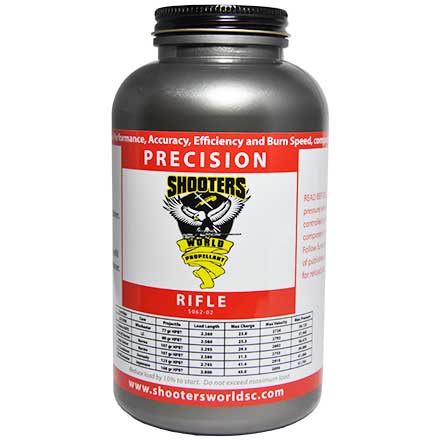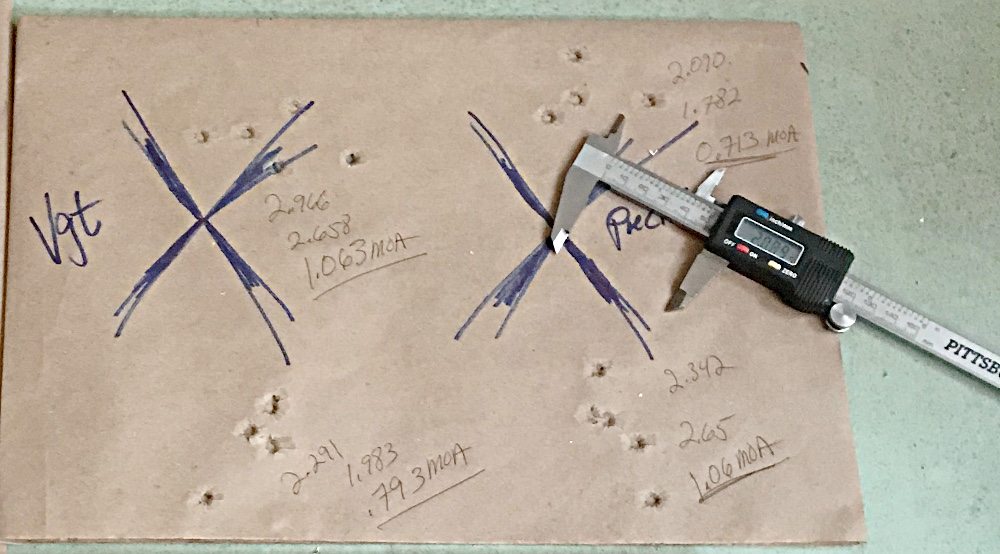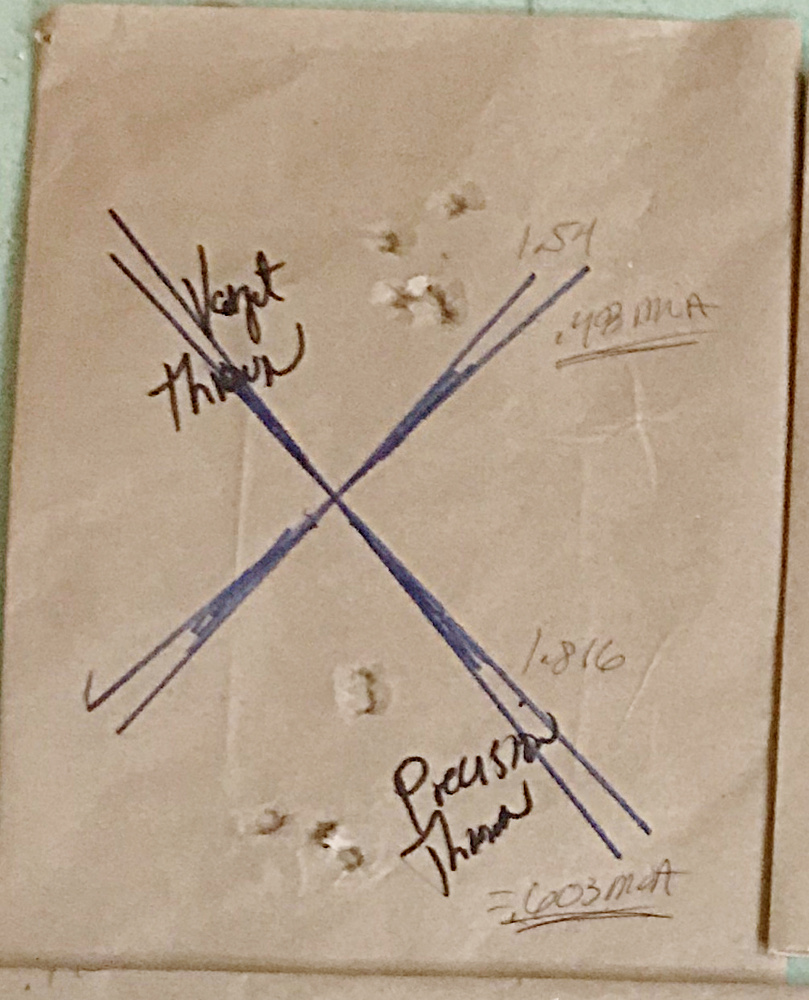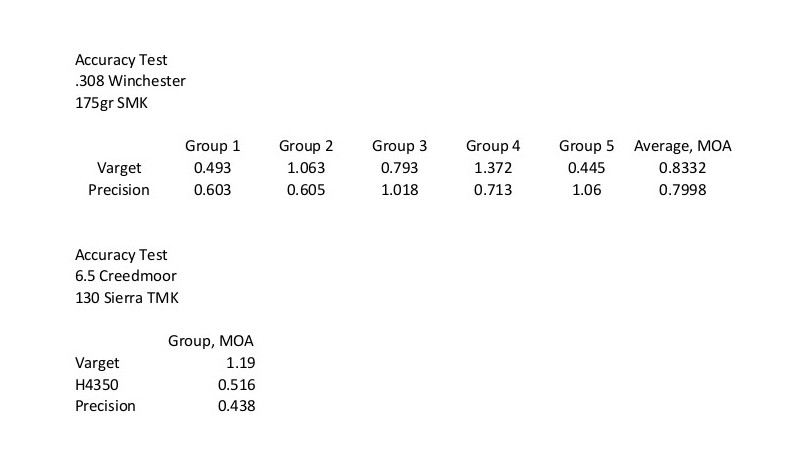A brand new propellant was introduced last time in this space that’s competing with Hodgdon’s legendary Varget. HERE’S MORE
by Ken Johnson, Shooters World
I presented a challenge to the common sense of the reloading world. In my last blog article, I introduced Precision to the readership. You might call that article a “tickler,” and it certainly generated a lot of questions! When we hear about questions, it means that people are paying attention, reading, and thinking! Good stuff!
Being a ballistician, several of those questions really stood out. I want to address them in this article. I’d also like to present data to support our claims.
First, relating to the burn speed and performance of Precision versus VARGET:
Some folks took the results of one test to state that Precision was 25 fps slower than VARGET. Therefore, they reasoned that it couldn’t have the same performance.
Fair enough. But we have to digest this.
We in the industry estimate a true burn rate differential by witnessing a velocity of 30+ fps at equal pressure. And in some ammunition, 1/10 of a grain can represent a better part of that 30 fps. The performance of Precision and VARGET do fall within the guidelines. Likewise, we found across several test loads, VARGET and Precision exchanged velocity supremacy. This is perfectly indicative of equivalent burn rate.
As an example, you may find the included .30-30 Winchester data and .223 Remington data interesting. These are the same lots of VARGET and Precision. At equal charge weight in .223 REM, Precision is within 26 fps and 955 psi of VARGET. Were we to add back that 955 psi, we’d also add back the better part of that 26 fps. In other words, in .223 Remington, Precision and VARGET the same velocity/pressure relationship.
Now, taking the same exact propellant lots, we performed a cursory test in .30-30 Winchester. At equal charge weight, we found 6 fps and 200 psi difference between the two propellants. And indeed, as we tested these propellants in other calibers, we found similar results.
Thus, we attest that if you like the velocity and charge weight of VARGET, you’ll find very similar velocity and charge weight in Precision.
Next, folks wanted proof of temperature insensitivity (and no marketing fluff!). And one person in particular wanted to see ballistic data BELOW 165F. So, we shot a test at 150F, to help the readership visualize the relative performance of these two propellants.
A common load for VARGET is the heavier class of .223 REM. We fired a baseline velocity and pressure test at ambient conditions. We found the VARGET ambient velocity from an 18-inch test barrel at 2544 fps. When we shot this same load at 150F, the velocity DECREASED to 2505 fps. The velocity change between ambient and 150F was 39 fps. And the pressure at 150F decreased by 2202 psi.
The Precision ambient velocity from the same 18-inch test barrel at ambient conditions was recorded at 2518 fps. When we shot this same load at 150F, the velocity increased to 2521 fps. The velocity change between ambient and 150F was 3 fps. Pressure at 150F decreased by 562 psi.
Precision’s temperature insensitivity beat that of VARGET, both in pressure and in velocity. Likewise, the velocity standard deviation of Precision at 150F outperformed that of VARGET in our tests.
To challenge both propellants in foreign environments, we further witnessed these same standard deviation results in .30-30 Winchester. Precision had better ignition characteristics than VARGET. And those differences were especially noted when ignition was challenged. What does this matter? Accuracy! The Grand Poobah of all importance.
Now, if you’ve ever read anything by me over the years, you know I’ve made the boisterous claim that weighing your powder to the 0.10 of a grain (let alone a single kernel) is tantamount to trying to teach a pig to sing. Folks, I’m here to tell you that all this craze of “weighing your propellant” to perfection is a waste of time. There are FAR more variables more important than the weight of your propellant in your case. IMHO, powder weight consistency is NOT a key to accuracy. Is it a contributor? Sure. But as long as you’re within +/- 0.2 grains of your intended charge weight, you’re doing pretty well.
Sure, if you’re off by a half a grain, you’ll see a minor effect in accuracy at 100 yards. And you might witness a half MOA shift at 200 yards in some cartridges. But unless you’re actually weighing each and every projectile, and documenting each and every case neck hardness, and measuring and documenting the internal volume of every case, I can tell you that 0.10 of a grain of consistency in powder weight just ain’t gonna matter even a little bit.
So, before I receive flaming hate mail and am declared a heretic in this sport and industry, here’s my statement:
If you’re an accuracy nut who enjoys (REALLY enjoys) shooting PRS matches or NRA High Power Rifle, or even just poking it out to 1,000 yards for fun, your time will be far better spent studying the art and science of MARKSMANSHIP than it will in trickling grains of powder. No, really…
To that end, I took the liberty to DUMP charges of Precision and VARGET in .308 Winchester, 175-gr Sierra Match King loads. I threw caution to the wind, and had at it. Oh — about 42.5 grains of powder, dumped through a Lyman 55 and into some plain-old Norma cases. Federal 210M primers. Fired at 250 yards. Results?
0.6 MOA for Precision. And 0.49 MOA for VARGET. Could have been better, sure. But how much better do YOU need it to be? Both powders appeared to dump fairly well. And shoot fairly well without even trickling. As a matter of fact, both of those non-weighed groups were some of the best groups I shot. But you just go ahead and keep on trickling those charges! LOL. Just know that some folks are practicing marksmanship, while you trickle your time away….
Okay, what about accuracy between Precision and VARGET? After all, we’re claiming great accuracy with Precision, right?
We completed 6 each, 5-round group tests at 250 yards. This, with a .308 Winchester and 175-gr Sierra Match King bullets. All loads were tested at 42.5 grains of both Precision and VARGET. According to calculations, this charge weight should yield identical velocity with both propellants. Those results:
Once we finished that .308 Winchester test, we decided to continue into the 6.5 Creedmoor. It seems that caliber is everybody’s latest darling. And it seems that everybody claims H4350 as the perfect propellant. Our brief test showed that there’s room for other propellants in that particular cartridge! We’re happy to assist…
Precision’s accuracy out-performed VARGET, and H4350, in the 6.5 Creedmoor.
Now, for the next question posed in the blog: Data. When we founded this company, and when we decided to start selling in the reloading market, we knew we had our work cut out for us. I told the partnership that Americans are insatiable for data. And that we’d have to focus for years and years on feeding that need.
Well, here we are. The new kids on the block. And just as sure as the sun rises, we’re being inundated with requests for more calibers, more projectiles, more propellants. The matrix of possible combinations is bewildering. But, we chose the path, so we’re working furiously to meet the demand!
Many folks don’t know that we actually support two data sets for reloading. Both are accessible directly from our home page (www.shootersworldsc.com). The first data set is SAAMI-type reload data. The second set is derived from tests conducted by Explosia under the Lovex brand. That data set is tested to European CIP standards. While there can come ballistic differences due to bullet hardness, cartridge overall length, and bullet form, both data sets are complimentary. And both support reloaders across a myriad of cartridges and propellants.
I do hope that my efforts described in this blog article have helped folks better understand the nature and capabilities of Precision. It’s quite a good powder.
Should you have further questions, or suggestions, our most important job is to listen. We’re always happy to help, and always interested to hear from folks!














